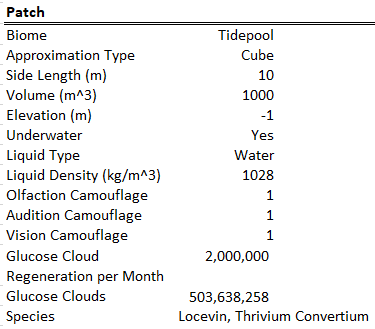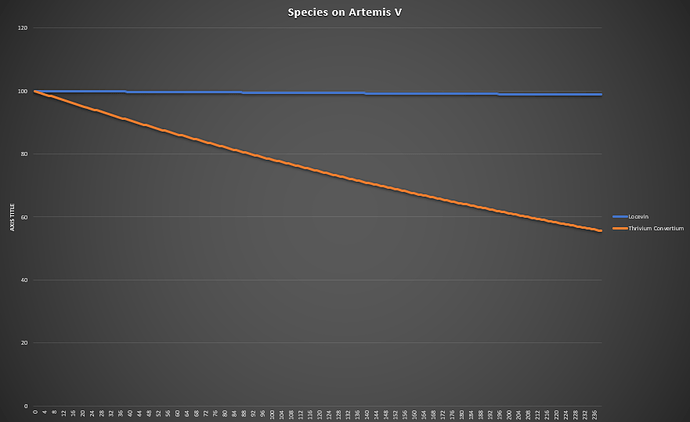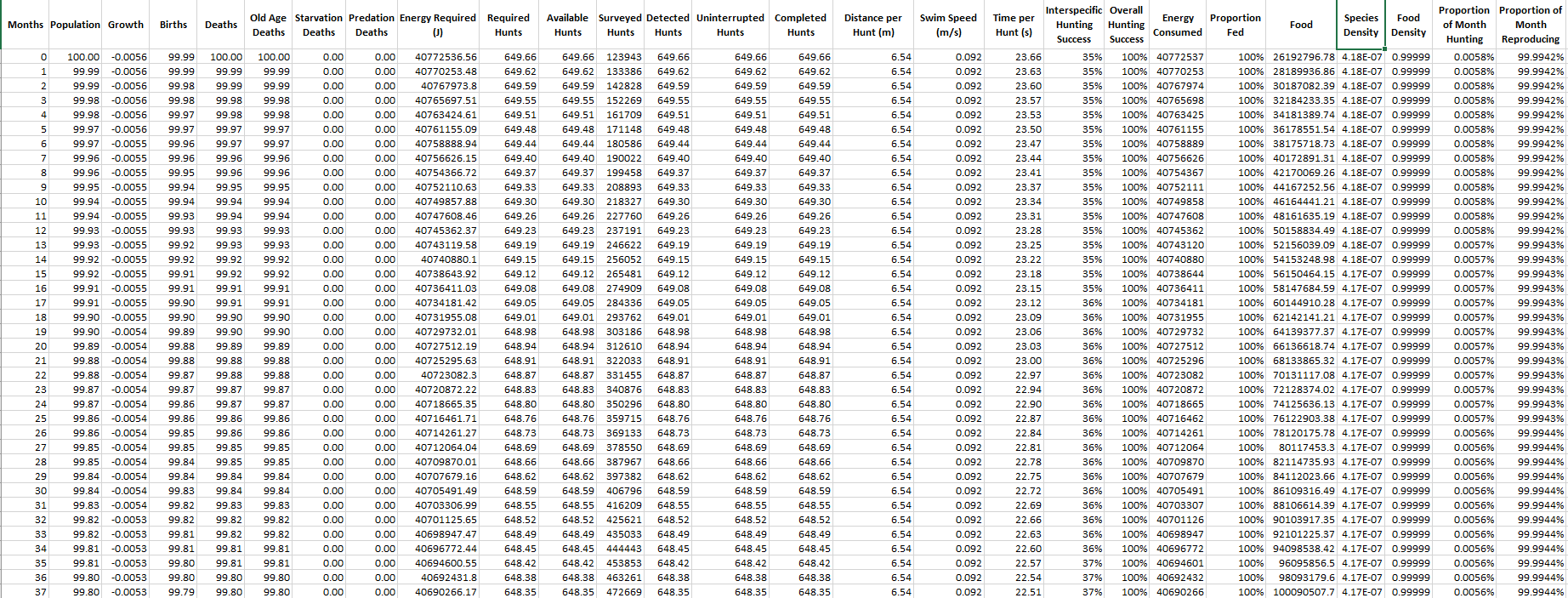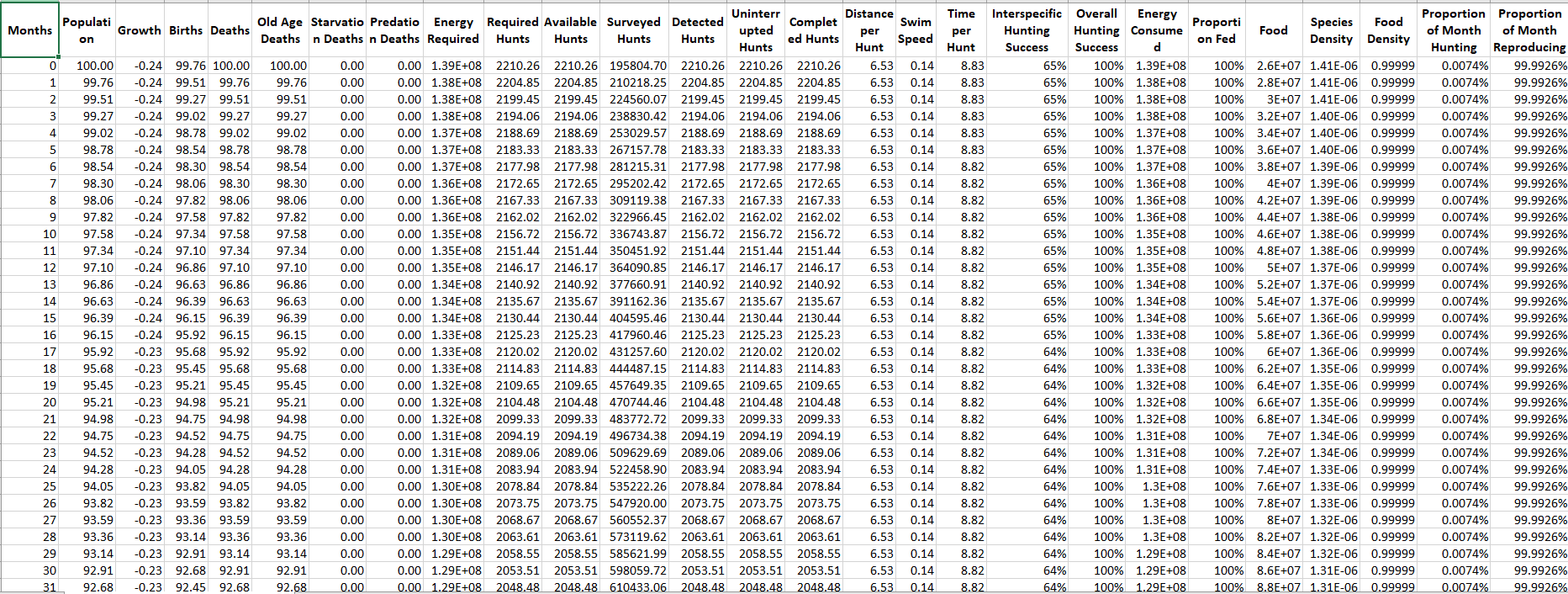@blackjacksike Yup, that’s the point of this thread. I’m working on an algorithm for auto-evo, and this is a chance to playtest it, catch bugs, and find things to improve.
Also, as a tip for anyone who plays in this game, do not be afraid to compete with or prey on other players. That’s the whole point of the game! There’s no hard feelings involved, it’s all part of the race for evolution! If you don’t compete with them or prey on them then they will compete with or prey on you. That is how biology and this algorithm will work, and if you are too pacifistic you’ll be more likely to go extinct.
Round 1
100,000 years have passed, and the original multicellular species of Primum Thrivium has split into two descendant species: Locevin, and Thrivium Convertium. Locevin and Thrivium Convertium exist as competitors for the free floating glucose clouds in the environment. Each has evolved their own advantage in the environment. Locevin’s evolution towards a cylindrical body size has made him a slower swimmer underwater, giving him a disadvantage against Thrivium Convertium. However, Thrivium Convertium’s increase in body size has reduced his overall mating frequency and increased his base metabolism (the energy he uses per day), giving him a disadvantage against Locevin. It appears that overall, Locevin’s higher mating frequency and lower metabolism is giving him the overall advantage in the tidepool. Thrivium Convertium dies too often from old age and does not reproduce enough, leading to a slow shrinkage in population.
Meanwhile, the relatively low populations of the two species has meant that most of the glucose in the tidepool has gone uneaten and is continuining to accumulate. The tidepool is becoming very rich in free floating sugars.
Locevin
Current Population: 99 members
Locevins have evolved a different shape to their simple bodies. Over many generations, their bodies have mutated away from their spherical ancestors into a longer, cylindrical structure. This has, however, reduced their speed from 14 cm/s to 9 cm/s, since cylinders are less hydrodynamically designed which increased the organism’s drag coefficient from 0.49 to 1.15 (higher drag coefficient is worse). This reduction in speed has made Locevin less competitive in catching glucose clouds than its competitor, Thrivium Convertium.
Another evolution to the Locevin species was in their muscles. Locevin has evolved a more efficient method of getting more energy out of sugar molecules in its muscles, meaning that the organism as a whole uses less energy per day (3.2 calories per day now instead of 3.3).
Simulation Stats:
Thrivium Convertium
Current Population: 55 members
Another species that has branched off of Primum Thrivium is the Thrivium Convertium. These organisms have maintained the spherical shape of their ancestors, yet have slightly increased in size by 1cm. This increase in size means it takes slightly longer for the organism to mate, since it takes a bit longer for all of the cells in its body to replicate (since there are now more of them). The increase in size has also increased the overall energy the species uses per day (11 calories per day, from 3.3 calories per day originally).
Thrivium Convertium has also evolved its muscle fibers to “rebound” back and forth like an elastic band. This means that when the organism flexes to one side, it uses its own momentum to flex to the other side (when swimming in an undulation pattern). This overall means it can swim with its muscles for longer before tiring out, increasing its endurance from 60 to 70 seconds. Thrivium Convertium has also slightly increased the strength of its muscles, increasing its speed and putting it at 14.49 cm/s instead of 14.3. Overall these two evolutions have made Thrivium Convertium a lot more competitive at catching glucose clouds than Locevin, but because of Locevin’s higher mating frequency it hasn’t been very effective.
Lastly, Thrivium Convertium has evolved a softer skin which makes it harder to sense whether you are touching it. However, this has had little effect since no species were actively using tactition to detect Thrivium Convertium.
Ecosystem Overview
The current patch conditions. Notice that glucose clouds have been skyrocketing with so few organisms to eat them.

Locevin's performance stats for the first 3 years of the simulation. Let me know if you want to see more. I'm still learning how to show just the important information. Notice that your Interspecific Competition Success Rate is pretty low (35%) but slowly increases over the generations.
Thrivium Convertium's performance stats for the first 3 years of the simulation. Notice that your Interspecific Competition Success Rate is higher than Locevin's but decreases over the generations since you don't produce as many offspring as him every round.
@zenzonegaming and @Evolution4Weak, now that we are on to the next round you guys can join! Choose a species to branch off of, choose your species name, and choose how to spend your mutation points. @Deathpacitoast You’ve been added to the waitlist!





